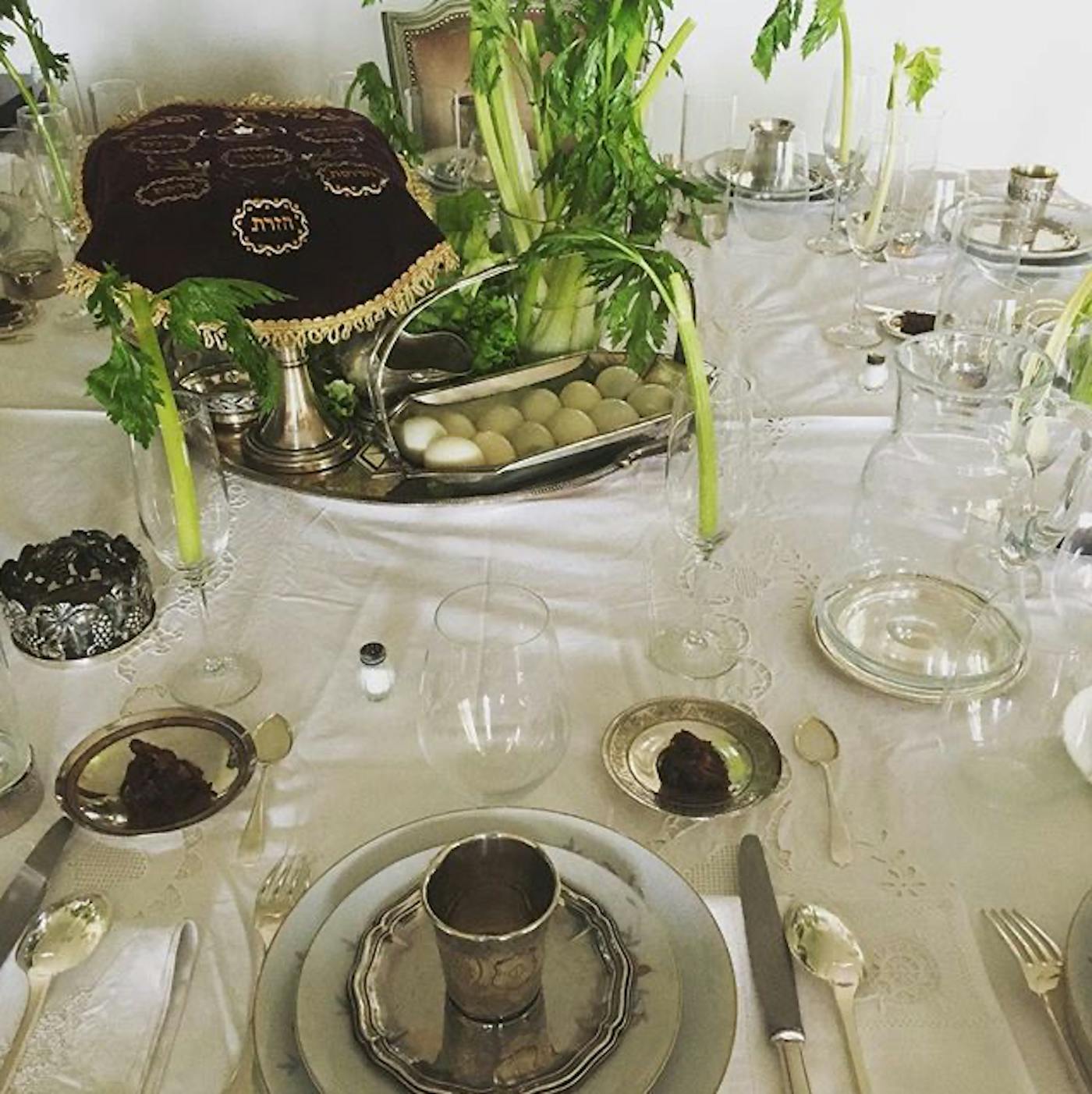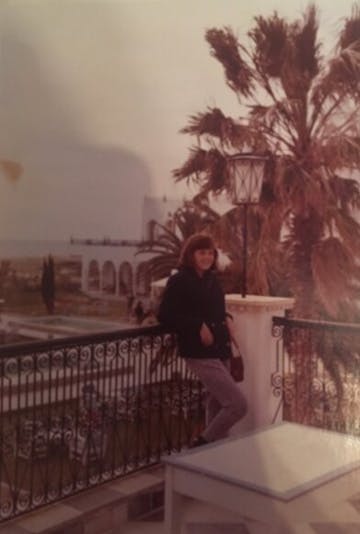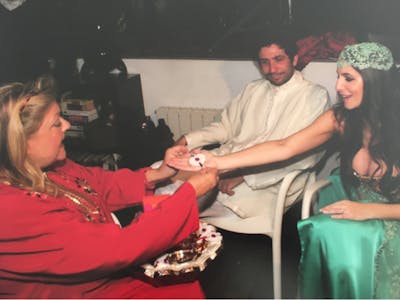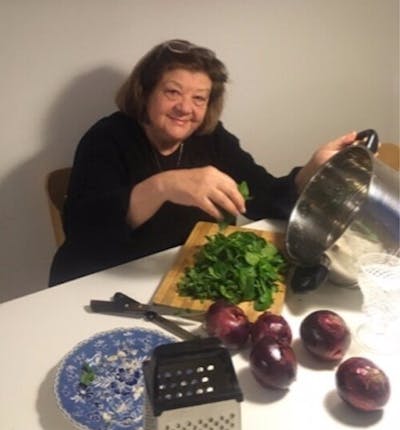Shared by Jessica Solnicki
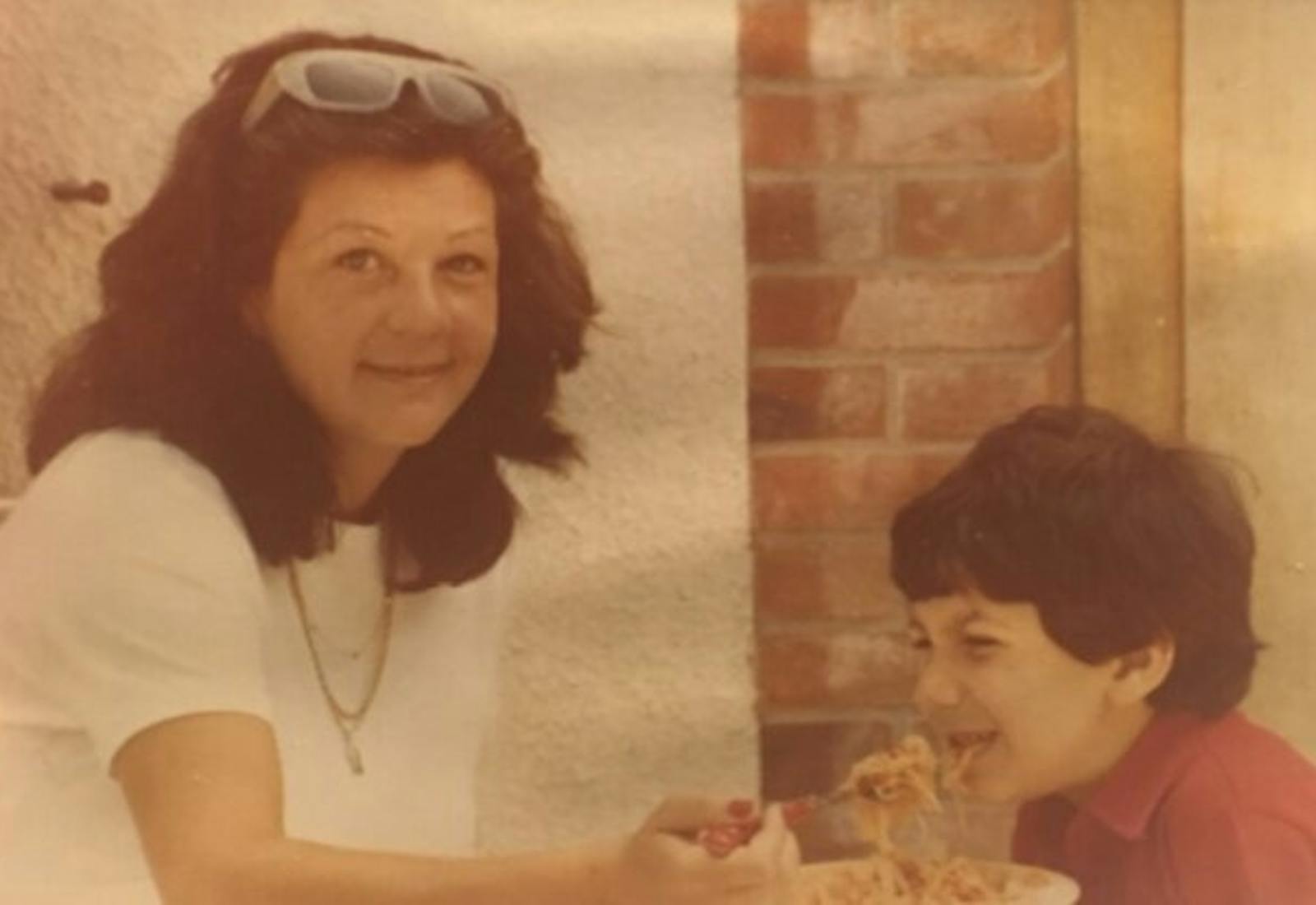

Each year as Passover approaches Jessica Solnicki takes out her Passover dishes to prepare for Seder in her home in Argentina. “I put out [everything] I inherited from my mother-in-law. Silver from Tunisia, dishes, plates, glasses, everything that looks really different from the rest of the year; that’s the idea,” she explains. Those plates traveled thousands of miles with Jessica’s late mother-in-law Aline Dora Darmon from Tunisia to France, and finally to Argentina in 2012.
They’re used to set an elaborate table where each Seder guest is given a small silver plate for charoset, made from dates, pistachios, almonds, cinnamon, and rosewater. Tall stalks of celery stand upright in glasses with salt water for karpas, and a silver basket of eggs is placed on a large seder plate. The eggs are hard boiled for a long time, Jessica says, to “show the toughness of our people.”
Aline passed away two years ago, but her recipes are still served on her Passover plates and Jessica even cooks with spices from Aline’s kitchen. Her menu starts with a course of salads, collectively called kemias that are served with matzo. There are cooked carrots with paprika and harissa, beets with cumin, and crunchy cucumbers with mint. For a main course, there’s msoki, a dish of lamb braised with an abundance of vegetables and spiced with harissa, cinnamon, and orange blossom water, served with rice. All of the recipes are from La Tunisie d’Aline, a cookbook Jessica wrote to honor Aline’s memory and preserve her recipes.
Growing up in Argentina’s capital Buenos Aires, the food on Jessica’s family Seder table looked nothing like Aline’s recipes. Her grandmother Pola, who left Poland for Prague and finally for Argentina after the Holocaust, hosted busy Seders with her grandchildren running about. True to her roots, Pola made Ashkenazi staples for the holiday. There was gefilte fish, classic matzo ball soup, latkes, pickled herring, and more. “I will never forget the image of arriving at my grandmother’s for the Seder,” she says. Pola would stand over two industrial size pots ensuring everyone was served the right amount of matzo ball soup.
Today, there are small nods to Pola on Jessica’s table like farfalej, a Passover side dish, and matzo ball soup. “In memory of my grandmother from Poland we do the matzo balls with the Sepharadic touch: a lot of pepper and cumin and a great soup,” she adds.
When she met her husband Arthur, Jessica already had an affinity for Sephardic and Middle Eastern flavors that she knew from Pola’s sister who married a Syrian man. On visits to Paris to see Arthur and for her work in fashion, Jessica and Aline would spend time together eating and talking about food. Aline would speak to her in French, Arabic, and Italian, none of which Jessica spoke. But, as a Spanish speaker, she could understand Aline’s Italian and started to write down her recipes in a notebook they bought together in Le Marais.
Aline would give Jessica two weeks worth of menus to make. As she learned the dishes, she felt more confident experimenting with them.
When Aline’s parents passed away, she moved to Buenos Aires to be closer to Arthur and Jessica. Finally living in the same city, the two women could host Passover Seder together and recipes continued to pass from Aline to Jessica.
This year, Jessica is preparing for a very different Seder at their family’s home outside of Buenos Aires where they are taking shelter during the Coronavirus epidemic. She’s still hoping to get back into Buenos Aires briefly to pick up Aline’s plates. Even if she can’t, she says, Aline’s recipes will be on the family Seder table as they always have been.
